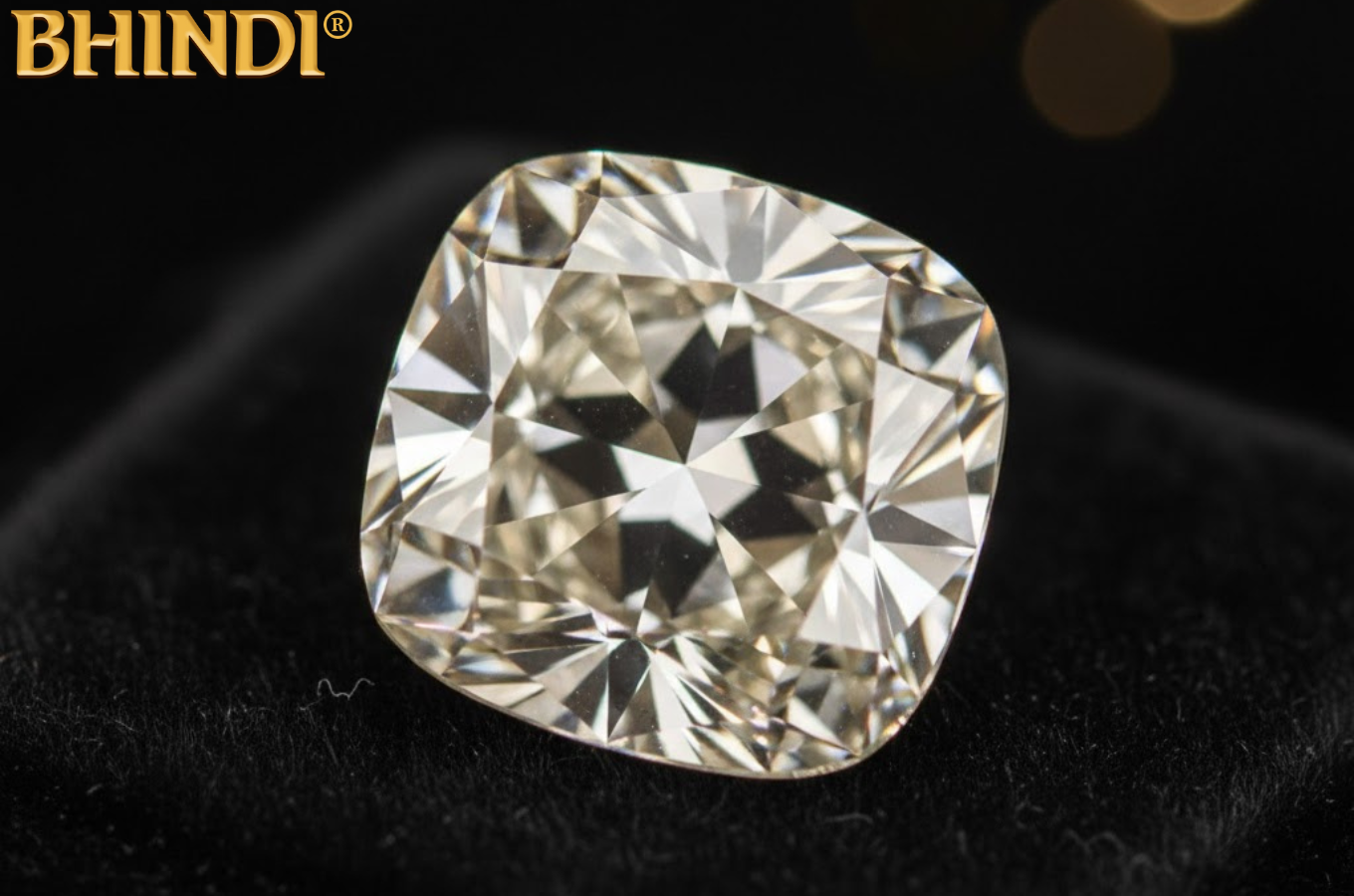Antique stones were cut by artisans, not machines. Every facet was placed by hand. They were shaped manually to capture the glow of candlelight rather than the glare of modern LEDs. The consequence was not mathematical beauty but poetic deformity. And in that sense, the bow tie and Maltese cross effect in antique-cut diamonds is a symbol of heritage.
Bow Tie and Maltese Cross Effect on the Antique-Cut Diamonds –What Is It?
The bow tie effect appears as a delicate, shadowed pattern across the diamond's center. The Maltese cross reveals itself as a soft, cross-shaped reflection within the heart of the stone. They are both products of antique faceting styles that enabled light to play differently through the gem.
Antique diamonds were cut to be deep and contrasting, unlike modern cuts, which focus on brightness maximization. The optical patterns were based on the uneven interaction of light with larger, hand-shaped facets.
Rather than pushing the personality of the stone flat, the bow tie and Maltese cross provide a sense of visual texture. They make the eye of a viewer move inwards and generate a feeling of intimacy and curiosity.
Why Are These Effects Worth Adoration?
These effects are by no means imperfections to the trained eye. They are the reminders of the hand-cut methods that characterized the art of jewelry before the industrial precision replaced them. Each shadow reveals individuality. Every glimmer tells the story of a cutter who shaped beauty using his intuition and candlelight.
These characteristics are usually preferred by the collectors, as they attest to authenticity. The bow tie and Maltese cross effect in antique-cut diamonds signals originality. And that is the very opposite quality of mass production. In the modern market, such uniqueness commands value. It gives every diamond a voice & a visual signature that no two stones share.
Beyond aesthetic value, these patterns also connect wearers to history. They represent the culture of an era when diamonds were emblems of craftsmanship and not the uniformity of perfection. When you appreciate these effects, you end up appreciating art and not algorithmic flawlessness.
Here is a quick summary:
| Aspect | Summary |
| Meaning of effects | These patterns reflect hand-cut artistry, not imperfections. |
| Individuality | Each variation shows the cutter’s craftsmanship under natural light. |
| Collector appeal | Effects like the bow tie and Maltese cross indicate authenticity. |
| Value | Unique, hand-cut features stand apart from mass production. |
Celebrating Timeless Character
Diamonds, today, may have brilliant shine. However, antique cuts captivate the heart. The warmth provided by a diamond with the bow tie and Maltese cross effect is intimate. It draws attention not through uniform sparkle but through soulful presence. The shadowed cross or faint bow is no mistake. It is a sign of workmanship and heritage.
To collectors or lovers of antique jewelry, these are some of the things that make each piece of antique jewelry invaluable. They are a symbol of craftsmanship, which cannot be replaced by technological tools, a symbol of art that cannot be recreated by machines, and a heritage of beauty that will last for generations.
You May Also Like: Art Deco Revival: Why 1920s Rings Are Making A Comeback
Ending Note
The next time you are looking at an old diamond, notice the spot in the center. The silent bow tie and Maltese cross effect in antique-cut diamonds you observe is not a defect. It is a tale etched in line and preserved in stone.
FAQs
Q. Are the bow tie and Maltese cross effects imperfections in antique diamonds?
No. They are natural reflections created with hand-cut facets. They add visual depth and demonstrate the antique craftsmanship of the diamond.
Q. Why are these effects more visible in antique cuts?
Traditional cutting techniques use broader facets and higher crowns. This creates more contrast and shadow. The outcome of this interplay is the Maltese cross and bow tie effects.
Q. Do these effects impact value?
No. They tend to enhance desirability in the antique diamonds. Collectors prize them as signs of authenticity and evidence of hand-cut artistry.

